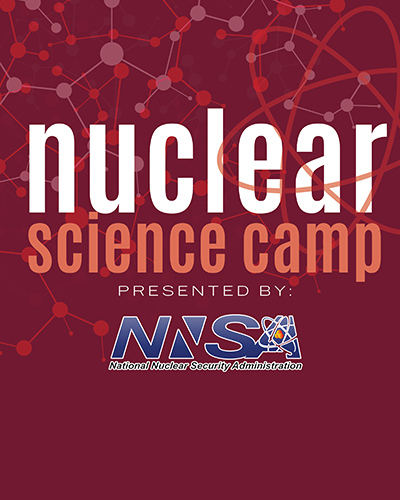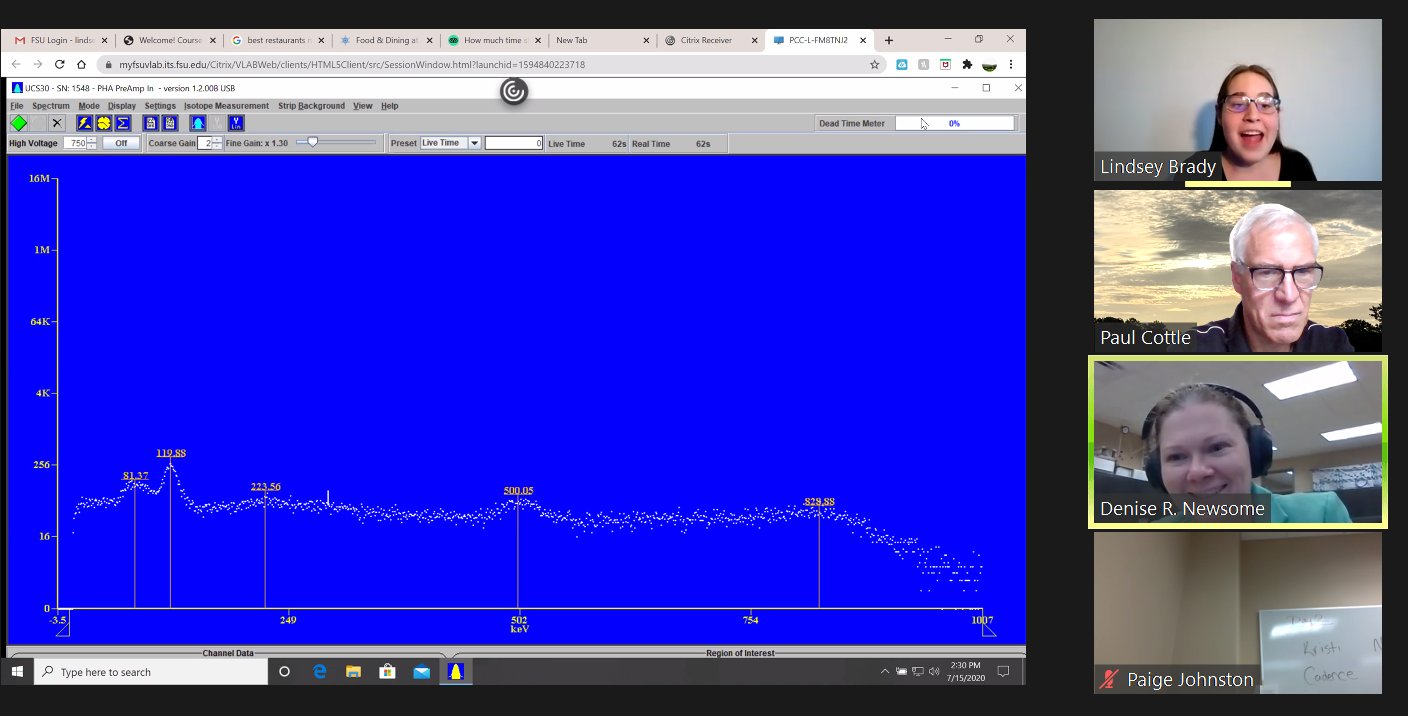
Nuclear Science Camp
The Center for Excellence in Nuclear Training and University-Based Research (CENTAUR), funded by the National Nuclear Security Administration and in conjunction with the department of physics at FSU, partner in this three day camp for middle and high school students. Students will gain an initial understanding of nuclear energy, the processes that create it, and the uses for it with hands-on gamma-ray spectroscopy activities, an examination of our campus for radioactivity using Geiger counters, and a visit to the John D. Fox Superconducting Accelerator Laboratory at Florida State University in Tallahassee.
Nuclear Science Camp Website
Impressions from the Nuclear Medicine and Science Camp 2020
Contributed by Dr. P.D. Cottle
The online (but hands-on!) Nuclear Medicine and Science Camp was held July 13-16, 2020 with the support of the CENTAUR consortium and the FSU Physics Department. The camp served nineteen middle and high school campers and provided a dramatic demonstration of what can be accomplished by talented teachers who are given the resources and freedom necessary to innovate.
The task facing Bozeman School science teachers Denise Newsome and Paige Johnston, who collaborated with FSU Physics professor Paul Cottle on this year’s camp, was enormous. The in-person Nuclear Medicine and Science Camps held in 2018 and 2019 under lead teacher Rachel Morris were notable for their heavy emphasis on hands-on activities and tours of hospitals and physics research laboratories. The job Denise and Paige faced was to take the camp entirely online while maintaining the hands-on emphasis. Denise and Paige succeeded.
The first camp activity on Monday morning was an equipment pickup. Each family came to the driveway in front of the Holley Center at FSU’s Panama City campus, which hosted the camp, and picked up a box of equipment that included a Ludlum radiation monitor, a PASCO radioactive source (designed for use in high school laboratories), a PASCO gamma-ray absorber set, a ruler, graph paper, some No Salt salt substitute, and a button with the FSU Physics logo emblazoned on it. On Monday afternoon, Denise and Paige led the campers through measurements with the Ludlum monitors of the dependence of radiation intensity on the distance from a radioactive source so that they could learn about the inverse-square law. The next morning, the campers studied the attenuation of gamma-rays from their sources using the plastic, aluminum and lead shielding of various thicknesses in their PASCO absorber sets and the Ludlum monitors. They also measured the gamma-ray photons generated by the radioactive decay of the potassium-40 in the No Salt, and hunted for radiation in their homes and yards while documenting those hunts with Flipgrid videos.

Boxes containing the equipment for the Science Camp.

Hands-on experience in the living room. A student investigates a radioactive source.

Dr. Aaron Couture from the Los Alamos Neutron Science Center (LANSCE) and Radiology Director Kim Brown from the nuclear medicine facility at Panama City's Gulf Coast Regional Medical Center explain gamma-ray detection devices to the students.

Students record gamma-ray spectra remotely. Denise, Paige and Paul assist via the video feed.
FSU Distinguished Research Professor of Physics Jorge Piekarewicz provided an exclamation point for camp week on Thursday morning with a presentation titled “Nuclear Astrophysics in the New Era of Gravitational Waves”. Families returned their equipment boxes on Thursday afternoon.
Camp week provided a reminder that effective education requires talented educators, dedicated support staff, and sufficient financial resources. Effective online education requires even more of all three. It is a lesson that our society must take seriously as we continue to move ahead in the pandemic era.